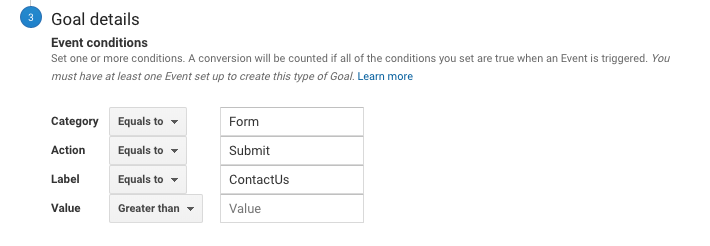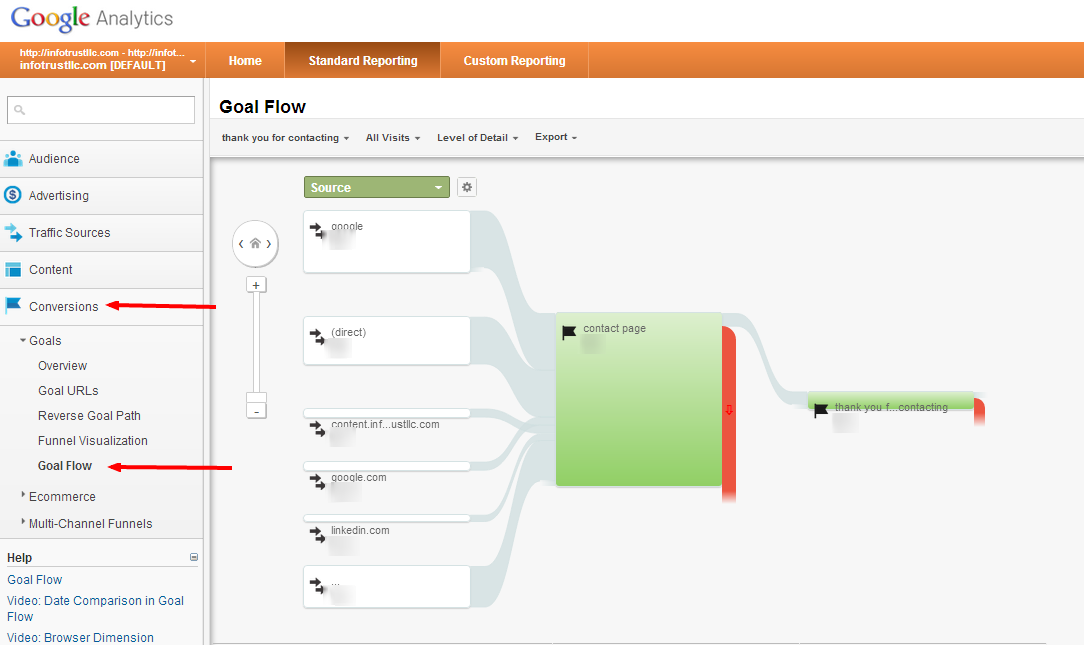Comprehensive Listing of What Data Is Google Analytics Goals Unable to Track
Comprehensive Listing of What Data Is Google Analytics Goals Unable to Track
Blog Article
Debunking Google Analytics Limitations: Uncover What Information Goals Can not Track
In the realm of electronic analytics, Google Analytics stands as a powerful tool that provides useful insights right into website efficiency and user habits. From the complexities of customer interaction with dynamic content to the complexities of cross-device individual trips, these restrictions lost light on locations that may stay covered from conventional analytics perspectives.

User Communication With Dynamic Material
Individual communication with dynamic web content plays a critical role in recognizing customer actions on websites and maximizing the general individual experience. By tracking customer communications with vibrant material, internet site owners can get important understandings into customer involvement, preferences, and behaviors - what data is google analytics goals unable to track.
Google Analytics supplies numerous tools to track customer interactions with dynamic material, such as event tracking and online pageviews. Event tracking permits you to keep an eye on certain customer activities, like clicking a button or watching a video clip, supplying data on exactly how individuals interact with vibrant aspects. Virtual pageviews can be utilized to track communications that do not result in a new web page tons, supplying a comprehensive sight of individual involvement with dynamic web content. By assessing this information, website owners can make enlightened decisions to enhance customer experience and drive conversions.
Cross-Device Individual Journeys
Just how can contemporary analytics devices track the complicated paths individuals take across multiple devices in their on-line journeys? Cross-device user journeys offer a considerable obstacle for tracking and evaluating customer behavior precisely. As customers engage with apps or web sites making use of various gadgets such as tablet computers, smartphones, and desktop computers, it comes to be critical to understand exactly how they relocate in between these systems to enhance individual experience properly.
Google Analytics encounters restrictions in tracking cross-device individual journeys because of personal privacy problems and technical constraints - what data is google analytics goals unable to track. While it can offer understandings right into private gadgets' communications, tracking a smooth individual trip across several tools continues to be a difficulty. This constraint can lead to insufficient data and fragmented customer understandings, making it hard for businesses to create a unified sight of the customer trip
To resolve this problem, companies can utilize advanced analytics tools that supply cross-device monitoring abilities, enabling them to get a more holistic understanding of user behavior. By leveraging these tools, organizations can bridge the gap in tracking cross-device customer trips and enhance their electronic methods for a seamless user experience.
Offline Conversions and Acknowledgment
As organizations browse the challenges of tracking cross-device customer journeys, another crucial element to consider is the realm of offline conversions and acknowledgment in the realm of information analytics. While Google Analytics supplies valuable understandings into online individual behavior, it fails when it concerns tracking conversions that happen offline. This constraint presents a considerable obstacle for services that have both online and offline sales networks.
Offline conversions, such as acquisitions view it made in physical stores or with basics call centers, are important to understanding the full consumer journey. Without the capability to attribute these offline conversions to particular online interactions, organizations may battle to accurately measure the influence of their digital advertising and marketing efforts.
To address this void, companies can discover alternative options such as incorporating CRM systems with online analytics tools or using unique promotion codes that can be mapped back to on-line campaigns. By linking the gap in between online and offline information, services can acquire a much more extensive understanding of their clients' actions and boost their overall advertising strategies.
Individual Individual Recognition
In the world of information analytics, the capacity to properly identify individual users across various on-line touchpoints is an important obstacle for organizations looking for to personalize and optimize their advertising methods. While Google Analytics gives beneficial insights into individual habits and interactions, it falls short in enabling the identification of details individuals due to privacy you can try this out concerns and technical limitations. Google Analytics makes use of distinct identifiers such as cookies to track user sessions and habits, yet these do not correspond to recognizing individual customers in an individual sense.

Information From Secure Pages
In spite of the enhancing prevalence of safe and secure pages on sites, getting data from these encrypted resources provides an one-of-a-kind difficulty for electronic analytics platforms like Google Analytics. Safeguard web pages, shown by HTTPS in the URL, secure data traded between the individual's web browser and the internet site's server to ensure privacy and security. While this security is vital for shielding sensitive info, it additionally positions constraints for tracking user actions and gathering analytics data.
Google Analytics encounters obstacles in gathering thorough info from safe and secure pages because of the file encryption methods in position. Therefore, particular information factors such as reference resources, keyword searches, and even some customer interactions may not be totally recorded when users access a web site through a protected connection. This constraint can influence the precision and efficiency of the data analysis, resulting in gaps in comprehending individual habits and choices on secure pages.
To navigate this difficulty, digital analysts may need to check out different monitoring approaches or take advantage of various other devices especially made to collect understandings from safe pages. By adjusting techniques to accommodate these constraints, services can still obtain useful analytics in spite of the restrictions provided by encrypted connections.
Conclusion
In final thought, Google Analytics has restrictions in tracking individual interaction with dynamic content, cross-device customer journeys, offline conversions, individual user recognition, and information from safe pages. These limitations impede a thorough understanding of individual habits and may bring about voids in information evaluation. In spite of its important insights, Google Analytics might not supply a full photo of individual engagement throughout numerous touchpoints. It is necessary for organizations to be knowledgeable about these restrictions and consider supplementary devices for a much more holistic sight of their data.
User communication with dynamic material plays a vital duty in understanding individual actions on sites and maximizing the overall customer experience. By tracking user communications with vibrant material, internet site owners can acquire valuable understandings into individual interaction, choices, and habits.
Google Analytics uses distinct identifiers such as cookies to track customer sessions and behavior, however these do not relate to identifying specific customers in a personal sense.
As an outcome, particular information factors such as referral resources, keyword searches, and even some user interactions may not be totally captured when individuals access a website through a safe link.In verdict, Google Analytics has limitations in tracking individual interaction with vibrant material, cross-device individual trips, offline conversions, individual user identification, and data from protected pages.
Report this page